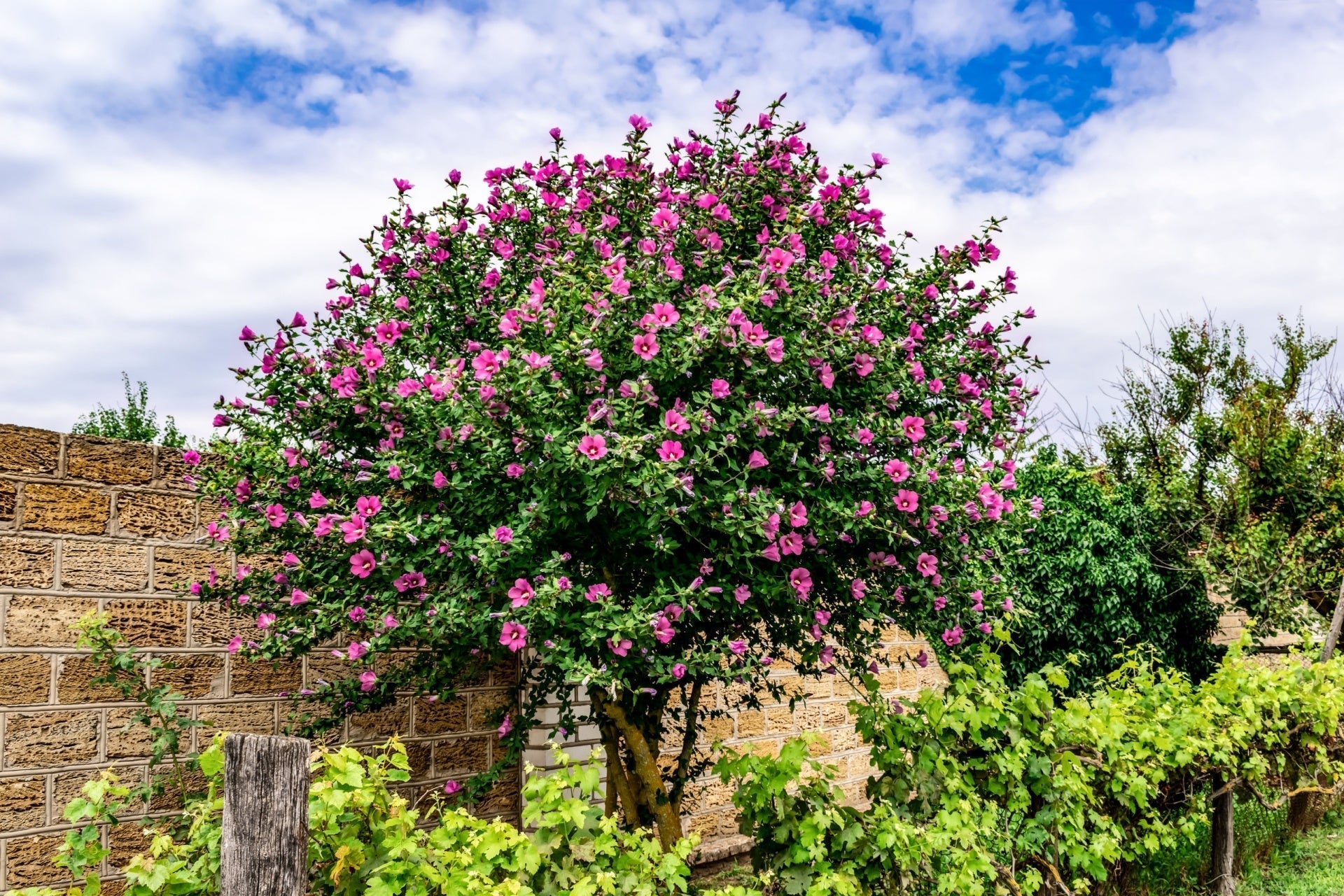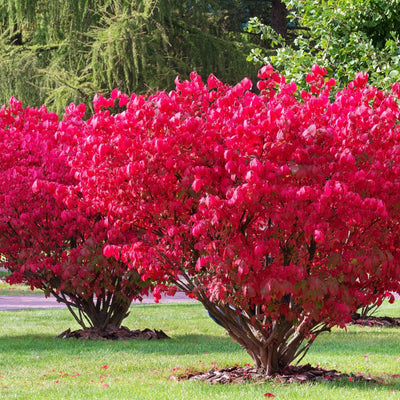The Rose of Sharon is a popular choice among farmers since it is colourful, sturdy, and easy to care for. The Rose of Sharon tree will provide you gorgeous flowers from summer to fall if you learn how to grow it. This plant is charming, well-structured, and beautiful for a long time, so it transforms the look of any yard. Adding companion shrubs like the Black Chokeberry and Burning Bush to your yard makes it seem better all year long by adding texture, contrast, and beauty.
Adding the Rose of Sharon to Your Landscape Design
When you add Rose of Sharon to your garden, think about using it as a border accent or as the main plant. This shrub is great for lining entryways, making hedges, or adding protection. This plant is great for both classic and modern gardens because it grows quickly and has bright flowers.
To draw attention to it with different colours, put Rose of Sharon companion plants like Black Chokeberry or Burning Bush close by. The deep, dramatic colours from these plants really make the pink, purple, or white Rose of Sharon flowers stand out.
Butterfly and bees love the nectar on the Rose of Sharon tree, so it looks great in parks for pollinators. This makes it a choice that is good for the earth and helps local ecosystems while also looking nice.
Planting Ideal Conditions for Rose of Sharon: Sun, Soil Spacing
To take good care of a Rose of Sharon plant, you need to know the right way to plant it and the right circumstances. This plant does best with at least six hours of direct sunshine every day. It can grow in full sun to partial shade.
Quick tips on how to plant:
- Soil: Likes loamy, well-drained soil, but can live in clay or sandy conditions.
- pH Range: Neutral to slightly acidic (6.0–7.0).
- Space: Plants need to be about 6–10 feet apart to let air flow and grow.
To plant, make a hole that is the same depth and twice as wide as the root ball. After putting the plant in the hole, fill it back up with dirt and give it lots of water. Put mulch around the base to keep the soil wet and keep weeds from growing.
For proper Rose of Sharon shrub care, it is also important to water it often, especially when the weather is dry. Make sure the soil is equally wet, but not soaked. A two-inch layer of mulch around the base helps keep the soil wet and even in temperature.
How to Grow Rose of Sharon
Once your Rose of Sharon plant is established, it won't need much care. This plant is hardy and grows well in USDA zones 5 through 9. It can handle both high humidity and short droughts.
Some important care tips are below:
- Watering: When the plants are growing, water them deeply once a week.
- Fertilizing: To get more blooms in the spring, use a balanced fertiliser.
- Pruning: Cut back the tree in late winter or early spring, before it starts to grow new leaves.
Get rid of any weak stems to help the plant keep its shape and flower a lot.
To get the most out of your Rose of Sharon plant, remember to get rid of any flowers that are dying so that new ones can grow. To keep the shape you want, it's also best to cut lightly after the flowers have died.
When choosing Rose of Sharon companion plants, try to find ones with leaves that are different colours or that are interesting at different times of the year. In the autumn, Burning Bush has bright red leaves, and Black Chokeberry has dark berries that birds like.
Seasonal Rose of Sharon Shrub Care
The Rose of Sharon plant stays healthy if you take care of it all year long. In the spring, add soil around the base and look for signs of new growth. During the summer, make sure to water regularly and remove the spent flowers. By fall, watering should be a little less, and mulch should be added to protect the roots before winter.
Rose of Sharon trees may do better with a layer of protection mulch around them in colder areas to keep them from getting damaged by frost. But once they're established, they usually do pretty well in mild cold.
Low-Maintenance Gardening with Rose of Sharon
If you want a garden that doesn't need much care, the Rose of Sharon tree is great. Once it's established, it doesn't need much Rose of Sharon plant care and does well in cities and small gardens. It can handle drought and grow in different types of soil, which makes it a great choice for busy growers.
Adding plants and ground covers around it will make the whole thing look better. Rose of Sharon, low trees and flowering plants all together give your yard a natural, layered look.
Why Gardeners Love the Rose of Sharon
The Rose of Sharon is loved by farmers for more than just its beautiful flowers. It is beautiful and easy to care for a long time, whether it is placed as a single plant, a privacy hedge, or part of a mixed border. Its flowers bring in hummingbirds and other pollinators, which is good for the environment outside.
It's also resistant to most diseases and pests, so it's a trouble-free addition to any garden. If you take good care of your Rose of Sharon plant, it will grow and have green leaves for years.
Learn More about Shrubs and Native Plants
Check out gardening.org for more information on how to plant and take care of flowering bushes like Rose of Sharon. TN Nursery also has a wide range of native and decorative plants that will look great in your garden.
FAQs
What is growing Rose of Sharon?
It means taking care of and growing this flowering plant so that you can enjoy its bright summer and autumn blooms.
What is the best time to plant Rose of Sharon?
The best times are in the spring or early autumn, when the soil is not too cold or too hot.
Are Rose of Sharon fast growing?
Yes, they do grow about 1 to 2 feet a year when they are in the right circumstances.
Where is the best place to put a Rose of Sharon?
Put the plant somewhere warm that has good drainage and enough space for it to grow.
What type of soil does Rose of Sharon prefer?
Soil that is sandy, rich, drains well, and has a pH level that is normal to slightly acidic.



